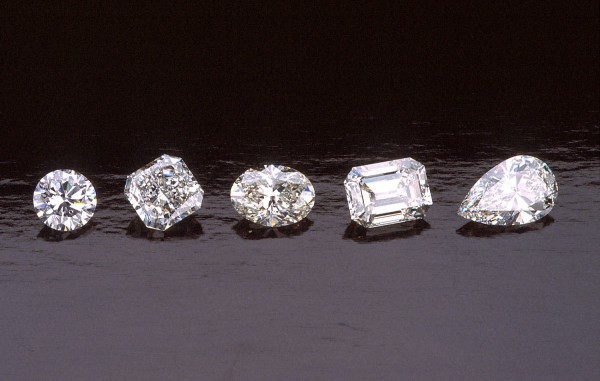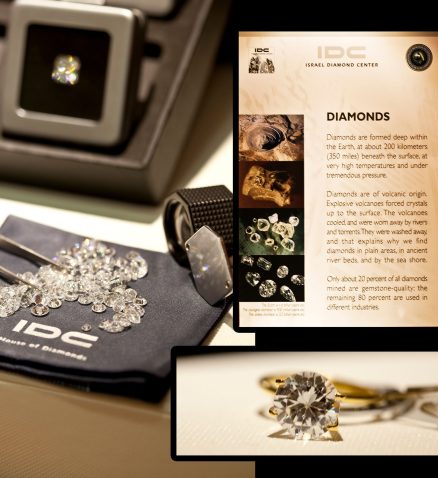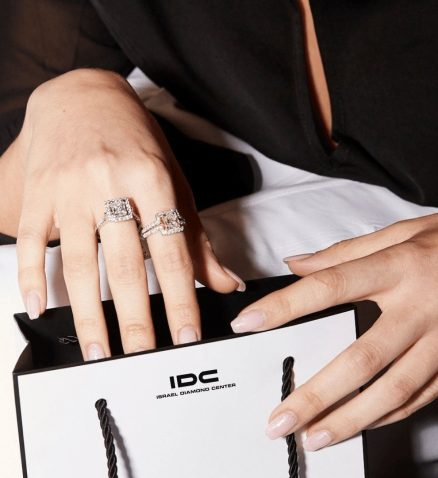The 4C Rule
Beautiful and rare, diamonds are desired for their beauty, sparkle, prestige, and message of love. When buying a diamond, there are four points to consider, collectively known as The 4C Rule.
Carat
The word carat originated from the carob tree. The tiny seeds of this tree are well known for their uniformity and consistent weight. Diamonds and gemstones were weighted against these seeds until the system was standardized, and one carat was fixed at 0.2 grams – a fifth of a gram.
The rarity of a 1.00 carat diamond is much greater than twice that of a .50 carat stone. It weighs twice as much, but the 1.00 carat diamond is statistically much more rare and difficult to mine than the .50 carat, hence it is more valuable.
Cut
As rough stones, diamonds do not reveal their magnificence: they must be cut and polished to exhibit the characteristic fire and brilliance that diamonds are known for. Of the 4C’s, the cut is the aspect most directly influenced by man. The other three are dictated by nature.
Diamond cutting is an art and a science: the cut of a diamond refers to the quality of workmanship and the angles to which a diamond is cut. Diamonds are usually cut with 56-58 facets which, following a mathematical formula, are placed at precise angles in relation to each other. If successful, a skilled craftsman will enable a diamond to optimally reflect light, displaying fire and brilliance: the diamond’s ultimate beauty.
Marcel Tolkowsky defined the ideal dimensions of a Round Brilliant in 1919.
Advancements in technology have resulted in the development of sophisticated machinery that can measure every aspect of a diamond’s proportions. It is this precision that allows such strict standards to be defined.
Diamonds can be cut into different shapes, know as Fancy Cuts.
Popular fancy cuts, from left to right:
Round Brilliant, Radiant, Oval, Emerald, and Pear cut diamonds.

Popular fancy cuts, from left to right: Round Brilliant, Radiant, Oval, Emerald, and Pear cut diamonds.
Color
Diamonds range in color from colorless to yellow or brown tints, with colorless being the rarest and highest in price and quality.
The color is graded by a gemologist, looking through the pavilion of the stone, viewed table down under a cool white light against a white background.
In the Color Grading Scale, the best color is D. The color scale descends from D through the alphabet to Z, moving further away from colorless toward yellow or brown tints.
Clarity
Clarity is determined by the number of imperfections, or inclusions, visible to the naked eye upon inspection under a 10X magnifying loupe. Inclusions create the individuality of diamonds, enabling them to be distinguished from others of the same cut, shape, color and carat weight.
Only about 20% of all diamonds mined have a clarity rating high enough for use as a gemstone; the other 80% are relegated to industrial use. Of that top 20%, a significant portion contains an inclusion or inclusions that are visible to the naked eye upon close inspection. These may include imperfections of the stones, natural inclusions within the diamond, or imperfections resulting from the cut. By evaluating these parameters, diamond professionals evaluate clarity. The fewer the imperfections, the higher the stone’s rating, and the more rare and more valuable the diamond.
Ultimate clarity is called “flawless”, a rare occurrence in nature.








 Hey, need help? We are here
Hey, need help? We are here